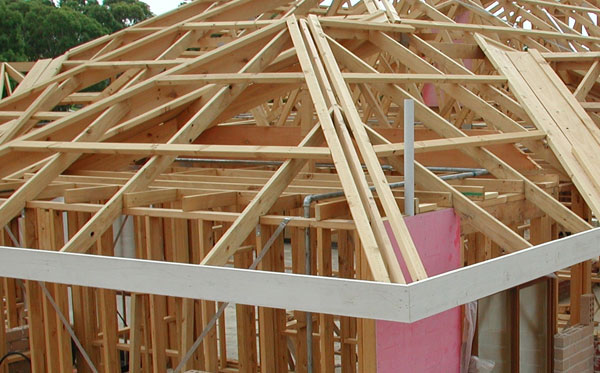Want to become a Tradie? Here is what you'll do and how they stack up in terms of salary
Becoming a tradie can be a great path for many looking at career options. There are many different trades to pick from. This article will have a look at the different options available, what is required to get qualified and what to expect in terms of salary.
All salary information is taken from payscale and is the Australian average for the trade.
Carpenters - $60,508 per year
Carpenter tasks include:
- Select lumber, materials, power tools etc.
- Work from blueprints, sketches and drawings in addition to verbal and written descriptions to accomplish the job by following measurements
- Build closets, counters, shelves, cabinets, doors, bulletin boards, windows, wall panels, roofs, concrete moulds and other related carpentry items
- Dismantle or demolish and remove designated items prior to the commencement of repairs or upgrades
Plumbers - $63,688 per year
A plumber is tradesperson who specialises in installing and maintaining systems used for water systems within buildings or underground. This includes drinking water, drainage, heating, sanitation, and sewage systems. Plumbers are not only involved with the installation and development of new plumbing systems, but also with assessing and fixing problems in existing systems, such as leaks etc. This profession requires thorough expertise in plumbing systems, as plumbers are involved in all aspects of their upkeep and must be able to identify a wide range of possible problems and solutions. When installing new systems, they must read blueprints to understand and follow the exact specifications for where a building's plumbing will be installed, making sure to use appropriate pipes and valves that will withhold the forecasted pressure. In doing this, they must also fully understand and follow regulations set by country and state and the particular building's code. Installing plumbing systems requires manual labor such as measuring (basic math skills required), cutting, bending pipe material, assembling valves, fittings, tubes, and appliances such as sinks, showers, toilets etc. It can also involve connecting house hold appliances like dishwashers and washing machines. Plumbers work in a variety of locations, as the nature of the job requires them to be on the road and visit multiple sites. The work can be both indoors and outdoors depending on the particular project and where the drainage systems are located. Plumbers can work for a firm or be self-employed. When working for a company they work full-time hours and are often on-call during the day and/or night. When self-employed, they generally set their own hours. Apprenticeships is the most common way into the profession.
Typical qualification for plumbers: CPC32413 - Certificate III in Plumbing
Plumber tasks include:
- Interprets blueprints and building specifications to map layout for pipes, drainage systems, and other plumbing materials.
- Install and repair pipes and fixtures and open clogged drains
- Cut openings in floors and walls to accommodate pipe and pipe fittings
- Utilise appropriate plumbing and shop tools
- Cut and thread pipes
- Installs supports for pipes, equipment, and fixtures prior to installation
Bricklayer - $58,402 per year
A bricklayer (also known as brickie) is a tradesman specialising in laying bricks to construct brickwork. Bricklayers work on sidewalks, streets, homes, walls etc. Bricklayers are responsible to cut bricks and other materials to fit the project they are working on. They could be building anything from a chimney to walls to entire buildings. They need to know how to read and follow blue prints and to follow precise directions when measuring bricks or dimensions such as width, height or depth. They could be working indoors or outdoors in a variety of weather conditions from extreme heat to rainy days. It is their responsibility to cut bricks by either pounding them or by cutting them with a chisel or saw. Safety is key when handling tools like those as well as know how to build a wall or project that will be sturdy, safe and high quality. They need physical strength and endurance to do many of their jobs that go with brick laying, as they are often lifting and holding heavy bricks in place. You will also work many long and odd hours to complete jobs on time and to do them at a time that works for the project managers or weather conditions.
Typical qualification for bricklayers: CPC30111 - Certificate III in Bricklaying/Blocklaying
Bricklayer Tasks
- Laying bricks, stone or similar materials to build residential/commercial chimneys and fireplaces, patios, walls or walkways
- Cutting and trimming bricks using hand and power tools to specific lengths
- Mix concrete and grout by hand or with a mixing machine
- Unload and load tools and equipment at the construction site
Builder - AU$75,674 per year
A builder is responsible for building and maintaining/repairing buildings, either residential or corporate. Builders often work within a team, and they must understand the basic order and process for how a structure is created. Apprentice builders usually carry out tasks such as preparing the building area, cleaning the area and remove hazards, assisting in delivering/distributing construction material or tools etc. A more experienced builder will be creating blueprints, estimating budgets, sketching construction projects and measurements.
A builder should be able to solve problems associated with construction, consider all possible solutions (and discuss them with stakeholders), make decisions on structural safety and integrity as needed. Builders can be required to work in harsh weather conditions as the construction site can be outdoors. These employees are provided with safety gear (PPE - Personal Protective Equipment) and are responsible for ensuring their personal safety, as well as the safety of coworkers (duty of care).
It is required that a builder has a strong and diligent work ethic as they are often putting on finishing touches and is able to complete physical aspects of this job, such as lifting and carrying heavy construction material or tools, working in hot temperatures or wet environments and completing physical tasks for long periods of time.
As you can see, builders on average earn more than carpenters, bricklayers or plumbers. This is explained by the qualification requirement: unlike the previous trades, a builder required a certificate IV, not III.
Typical qualification for builder: CPC40110 - Certificate IV in Building and Construction (Building)
Builder tasks include
- Manage, coordinate and work on the construction, maintenance or repair of residential and commercial buildings
- Communicate and work with development, test teams and customers to resolve build related issues
- Resolve build breaks
Electricians - AU$71,477 per year
Typical qualification for electricians: UEE30811 - Certificate III in Electrotechnology Electrician
Electrician tasks include
- Installing and maintaining all of the electrical and power systems for homes, businesses, factories etc.
- Study and understand electrical schematics
- Assist in performing and interpreting power calculations, power factor, insulation tests and positive relay tests as required
- Perform daily inspections and maintenance on electrical equipment
HVAC technician - AU$75,329 per year
HVAC Technician Tasks
- Respond to customer service needs, installing, repairing, checking, and testing systems for performance problems
- Fix and install ACs, cold rooms etc
- Perform preventative maintenance and part repairs according to schedule
- Instruct end users in appropriate use of HVAC and environmental systems
- Document and tag all activities, parts, equipment used and travel in log book
Campuses to complete face-to-face safety induction training
Conclusion
Trades can be fantastic career depending on your passions and personality. You don't need to dig yourself out of student debt as you are paid as an apprentice. If you enjoy working with your hands more than sitting behind a computer hours on end, it might be perfect for you.
Trades are more physically demanding than white collar jobs, which can be a great way to stay fit outside of the gym. Be aware that many trades may require you to work odd hours and on week ends.
One thing all tradesmen have in common is frequent access to construction sites. In Australia, anyone wishing to enter a construction must complete a White Card course, which is a safety induction course teaching you about what you need to know to stay safe on construction sites. The topics span from legislative requirements to stakeholders and their responsibilities, to the correct use of PPE and fire extinguishers all the way to identifying hazards and risk control measures. It will also teach you the signage (such as warning and danger signs) used on construction sites.
HVAC technicians earn just below builders on average, but by far the highest with just a certificate III (builders require a certificate IV). Their job prospect is also very good with temperatures rising across the globe and more and more ACs installed each year.
Tradie Training is a RTO (Registered Training Organisation) that delivers White Card safety training.




Comments
Post a Comment